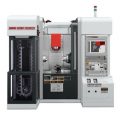It’s been some time since we last discussed quality control.
MICROingranaggi‘s latest investments in the metrological room date back a few years and, despite the fact that production technologies have evolved since then, also at a quality level, I continue to ask myself how so many enterprises – which have started to make investments again – don’t invest in quality control.
In our sector there is a saying that goes: the measuring machine doesn’t make shavings, but…
In other words: you don’t sell the quality of a manufactured part, but the part itself, so investments have to made on tooling machines – possibly with superior levels of technology – that allow enterprises to achieve fast production rates at a lower cost. Everything else happens later on (or – as often happens – “doesn’t happen at all”).
But it doesn’t actually work like this. The fact that “the measuring machine doesn’t make shavings” is a matter of truth. But it is also true that
if the parts we produce are not up to standard, we will find it difficult to sell them.
Without forgetting that, as I wrote some four years ago, the moment we manufacturers launch a product on the market, we are the ones responsible for any damage that we may cause if any nonconformities arise. Correctly performed and, above all, well documented quality controls are a vital advantage for our customers, yet also a fundamental “safety system” for manufacturers like us, as they can become our lifeline if any complaints should arise.
So:
a latest generation, superior technological machine can not provide me with the absolute certainty that the parts I produce are actually up to standard. The measuring machine does this and, consequently, it will always and only be the measuring machine that can provide this guarantee.
But, it is obvious, the costs I have to bear will be higher. And it follows that the costs will also be higher for my customers too.
A practical example: Let’s imagine we purchase a lathe that has a production rate of ten parts per minute, and we make this investment to boost the productivity rate of our workshop. This means we will have the possibility to sell the parts at a lower price. And be more competitive.
If, however, we also decide to invest in a measuring machine, we don’t just bear the cost of actually purchasing the machine itself, but also the operating costs including, therefore, those related to the recruitment and training of specialized personnel, maintenance costs and so on. This would inevitably lead to an increase in the final prices of the products, hence losing the competitive advantage from an economic point of view.
And this is the reason why many enterprises choose not to engage in investments in quality control.
In my mind, this kind of reasoning may have a certain logic, but it is not so clean cut.
Which and how many mechanical enterprises are able to purchase products whose quality is not guaranteed? And how many enterprises of this kind will there be in the future?
Even at the low-end of the markets, to what extent can an Italian enterprise compete with those in the Far East?
It is said that it is easy to quantify quality costs and much more difficult to quantify non-quality costs (or rather the disadvantages).



